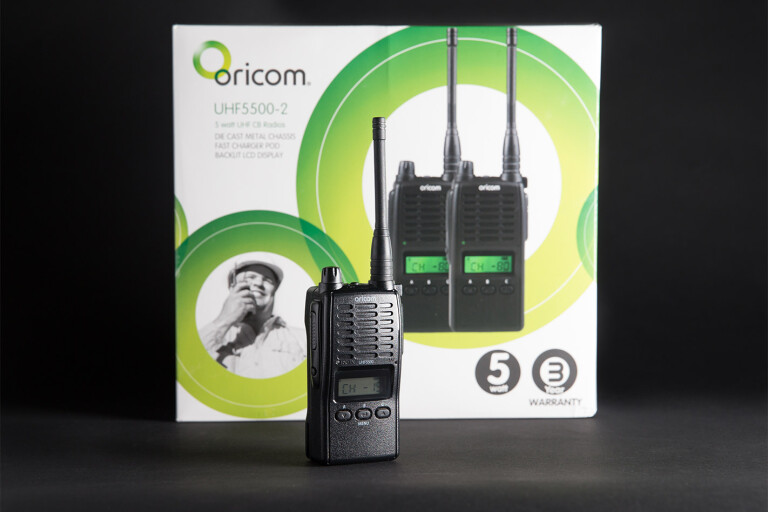
New radios keep the 4X4 Australia crew in touch on the road.
Radio communication in the bush is an essential tool for both safety and convenience. Vehicle mounted UHF radios are standard kit for any 4x4 used for outback travel and hand-held radios are handy when you are away from the cars. Hand-helds can also be handy for car-to-car communications if you don’t have a permanently mounted radio set to your vehicle.
Here at 4X4 Australia, we only have test cars for a week and can’t add accessories, so we rely on hand-held units to keep the cars in convoy and communicate with photographers who are sometimes shooting the moving cars from 500m away.
Hand held UHF radios are available to suit any budget from less than $50 to up to $500 and while the cheapies might be useful and fun for the kids to use around the campsite, their effectiveness over distances and hilly terrain is often lacking and not dependable. This is because they are low power radios, usually about one or two-watt units with some even as low as half a watt.
You can’t beat five-watt radios for reliable comms. This is the power of most in-car fitted radio sets but you still won’t get the same performance from a five-watt hand-held due to the smaller, non-permanent mounted aerials. Some hand held radios do have a provision to fitting an external aerial when used in a vehicle.
Good quality five-watt radios can also get very expensive so we were keen to sample these moderately priced five-watt Oricom UHF 5500 units. The UHF5500 retails for $199 as a single unit or you can get them as a twin pack as we did for $379. We had heard good reports on these radios from people who had bought them, so the 4X4 Of The Year road test in December was the perfect time to see for ourselves.
The Oricoms are solid feeling, compact units that fit nicely in your hand. They use a die-cast body that feels like it would take a knock or two. They feature 80 channels just like the modern in-vehicle units with duplex mode and CTCSS features. You can program your three favourite channels in to the unit so that they are quickly accessed by one-touch buttons. Channel scanning is also available.
The UHF 5000 comes with the radio itself, a belt clip, a charger for both 240-volt or 12-volt charging, a 1800mAH lithium-ion battery and a wrist strap. The twin pack gives you two of everything so you are getting two complete kits for a nice little discount.
In use, the back lit display on the UHF 5500s is easy to read in any light and the large buttons and volume dial are simple to operate. They proved to be more powerful than other low powered radios used on the road test – the two Oricoms and another five-watt radio could communicate over the stretched out convoy, while the low powered radios couldn’t transmit to us. The li-ion batteries were good for around two 10-hour days of use before needing a recharge.
At one point during the week of testing, the convoy was confronted with high winds creating a sand storm on the beach. A couple of cars were also bogged to their bellies and Hendo had the Oricom clipped to his belt while digging them out in the sand – there were no problems with the radio after this, despite it being buried in the sand as a result. He did get a bit of sand in the optional speaker mic he was using but it was cleaned out with a couple of taps.
With the feedback we’ve got from other UHF 5500 users, we’re confident that these radios will stand up to further testing – we’ll continue to use them.
There is also the back-up that Oricom is an Australian company (the radios are manufactured overseas) and offers a three-year warranty on the products.
We say: Compact, robust and affordable hand held UHF radios.
RRP: $199 single or $379 in a twin pack
Where from: www.oricom.com.au

COMMENTS